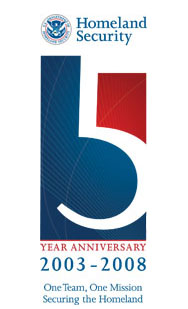
| Home | Information Sharing & Analysis | Prevention & Protection | Preparedness & Response | Research | Commerce & Trade | Travel Security & Procedures | Immigration |
| About the Department | Open for Business | Press Room |

The threat level in the airline sector is High or Orange. Read more.

Through this program, the Department of Homeland Security's Office of Infrastructure Protection (IP) works closely with federal, state, and local homeland security authorities, as well as the private-sector owners and operators, to identify security enhancements and protective measures.
The Comprehensive Review (CR) Program contributes to our homeland security by:
The Department began the CR effort in May 2005 with the nuclear sector. In September 2007, IP’s Protective Security Coordination Division (PSCD) had completed CRs at all 104 nuclear power generation reactors, nationwide.
Every CR uses a standard set of tools and templates to develop a given facility’s complete risk profile—including vulnerability to a variety of threats, the range of consequences related to the threats, and an evaluation of the existing security and response capabilities.
The process provides a vehicle for discussion with stakeholders on potential enhancements to security in and around the site. This framework assists in reducing vulnerabilities, implementing appropriate protective measures, and mitigating the potential consequences of a successful attack.
The CR team meets prior to the site visit and reviews the consequence and vulnerability information provided by the facility owner/operator as well as the various preexisting security and emergency response plans.
Following the orientation, the CR team deploys to conduct a site or regional visit, during which team members interact with key security personnel and emergency planning staff at each facility, selected operations and engineering personnel, and state and local law enforcement and emergency management leadership.
CR teams for each sector are led by PSCD and Sector Specific Agency Executive Management Office (SSA EMO), and include representation from federal agencies such as the following:
The federal team works cooperatively with the State Homeland Security Advisor (HSA), and state, county, and local emergency managers and planners, and emergency response agencies, as well as private representatives and associations.
Following the visit, the CR team reviews the information gathered and conducts analysis. The information is shared with appropriate stakeholders, including federal agencies, state/local law enforcement, emergency management organizations, and facility owners/operators.
Each CR produces the following:
CR data is also subsequently analyzed for sector and cross-sector trends. This information may be used to inform future federal investment decisions, or point to areas where research is required to evolve additional protective measures.
This page was last modified on December 6, 2007